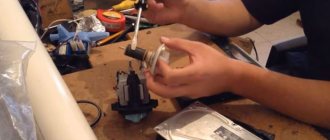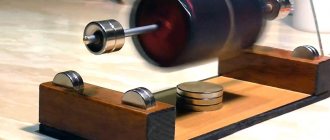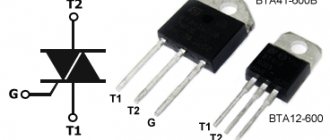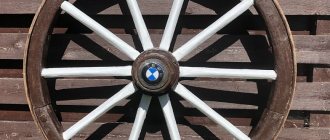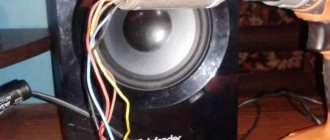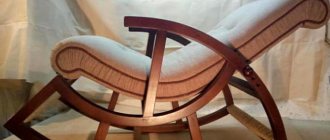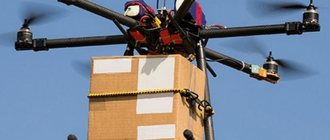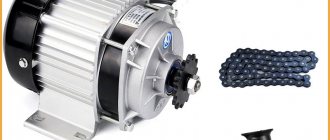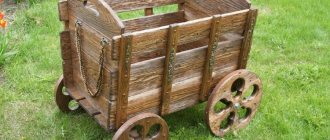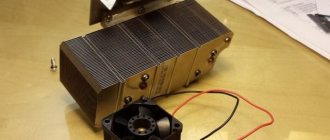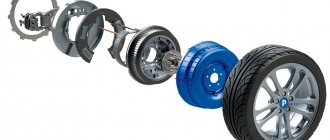Commercial wind turbines are usually equipped with helical propeller motors. They have high efficiency - up to 49%. But such engines are difficult to manufacture, so homemade wind generators usually have a standard rotary motor design.
Wheel motors for electric bicycles and hoverboards are often used as generators for home wind power. In fact, an MK for a bicycle, scooter or electric car is a ready-made 3-phase current generator using magnets.
Characteristics
We list the important features of bushing electric motors:
- In generator mode, the wheel motor begins to produce current without delay. The rated power of the MK with this use case is achieved at 500–700 rpm, depending on the features of the model.
- Electricity generation is ensured immediately after installing the wind generator, even with low wind force (1–2 m/s).
- The output voltage is proportional to the rotation speed.
- To increase the output power, it is enough to connect additional windings.
- To brake the MK, it is enough to short-circuit the windings among themselves.
- To adjust the power, you can remove or connect additional windings by short-circuiting them first.
A simple and powerful generator for a bicycle
A bicycle is an excellent exercise machine that gets rid of extra pounds, makes your body slim and fit, and also increases your endurance and keeps you in good shape.
Now many people ride a bike to work, home, etc., and there are times when at night you need electricity for a flashlight or to charge your phone. This is what the author will do, he will make a very powerful and compact electric generator that will charge a phone, a flashlight, etc., well, let’s get started. Tools
1. Drill 2. Glue gun 3. Wrench set
Materials
1. USB boost regulator: 0.9V – 5V to 5V 600MA 2. DC motor 3. small wheel
STEP 1. Making a wooden stand
At this stage you need two pieces of wood. Make 2 through the hole with a drill. These holes are for attaching the generator to the bike. Place one small piece on top of another piece using a glue gun.
STEP 2. DC Motor
To produce electricity you need a mechanical system. The rotating DC motor converts mechanical energy into electrical energy.
STEP 3. Solder the USB boost stabilizer to the motor
Solder the USB boost regulator wires to the motor. Then glue it all with glue onto a wooden stand as shown in the photo.
STEP 4. Add. fastener
Add. We attach the motor to the rack.
STEP 5. Putting on the wheel
A DC motor requires a small wheel to turn. This is a wheel holder on the motor shaft. See full collection in image.
STEP 6. Attach the generator to the bicycle
We fasten the generator to the bike with fasteners, as can be seen in the photo. If you ride at average speed, you can quickly charge your phone, flashlight, GPS navigator, etc. I gave you the idea, only you can develop it further! Good luck, friends!
Homemade video:
Source Delivery of new homemade products to the post office
Receive a selection of new homemade products by email. No spam, only useful ideas!
*By filling out the form you agree to the processing of personal data
Become the author of the site, publish your own articles, descriptions of homemade products and pay for the text. Read more here.
usamodelkina.ru
Types of motor wheels
Motor wheels come in geared and direct drive types. For use as an electric current generator for a windmill, only direct drive models are suitable. Not only are they more reliable and last longer thanks to their simpler design, but they also offer energy recovery capabilities. In addition, the absence of gears on a direct drive electric motor reduces mechanical losses.
Based on weight and power, direct drive MCs are divided into 3 categories:
- Models weighing 4.5–6 kg with a rated power of 600–1000 W and an efficiency of about 85%.
- Devices weighing 8–10 kg with a rated power of 1.5–2 kW.
- “Heavyweights” weighing up to 24 kg and power up to 8 kW.
To obtain a good inertial effect, the wheel motor used as a generator must be heavy. To obtain a powerful windmill, a 1000 W and 48 V MK is suitable. A universal model can be assembled from an 800 W MK, and a compact version is based on a 500 W hub electric motor.
Kit for turning any car into a hybrid / Sudo Null IT News
Students from Middle Tennessee State University, led by Dr. Charles Perry, have been working since 2008 on a kit that will turn almost any car into a hybrid.
There are many problems with modern electric or hybrid cars. The design of the drive requires processing, this requires costs that affect the final cost of the car. Plus, no one is offering to convert your car into a hybrid - if you decide to try it out, you will have to sell the old horse and buy a new one. At this rate, it is completely incomprehensible when at least half of the cars will drive using electricity - the new product is penetrating into life very sluggishly.
But Charles Perry and his comrades offer a completely different option.
From ordinary components, without any expensive innovations, they assemble a kit that can be installed on almost any car. The batteries and controller of this cooled device are placed in the trunk. The innovation lies only in the placement of the thrust. The three-phase brushless DC electric motors themselves are placed in the rear wheels in the free space that is already there - around the brakes. The stator electromagnets are arranged in a circle, and the rotating disk to which the wheel is attached is equipped with permanent magnets. The electromagnets are controlled by a controller, and when the system is turned on, the wheel turns into an electric motor.
Thus, no components of the car are modified or affected - brakes, suspension, bearings remain unchanged.
The system is created as an auxiliary system for an internal combustion engine, and is designed for city driving at speeds up to 40-45 mph (up to 60-70 km/h). The controller works completely transparently - if the driver does not know about this setting, he may not feel it. As soon as the driver presses on the gas during acceleration, the system automatically turns on and helps accelerate and drive.
When high speed is reached, the system also turns off automatically. Dr. Perry claims that in their tests, fuel economy is 50%, which means that when driving in urban conditions, you can travel twice as far with the same amount of gasoline.
In the video, the batteries with the controller look quite voluminous, but Dr. Perry claims that this is a test setup, so it is a little larger than what they expect to end up with.
Perhaps the time will soon come when anyone will be able to buy such a kit for themselves and upgrade their swallow - just like you can now buy an electric kit for a bicycle.
habr.com
Voltage selection
When purchasing a direct-drive MK for a vertical windmill, you need to choose models with increased voltage. For example, for a 12 V battery system, a 24 V gearless electric motor is suitable, for a 24 V battery, a 36 V motor, etc. This difference in voltage is necessary to compensate for its decrease on the controller and to operate correctly at increased speeds on the windmill. In addition, the voltage of the electric motor must be higher than the specified output voltage in order to prevent it from critically decreasing when rotating at partial power.
Wind generator maintenance and care
To ensure trouble-free operation of the wind generator, it must be securely fastened to the blade. The longer they are, the more firmly they should be attached. The timing of inspections is prescribed in the regulations of the energy generating company, its passport and instructions for use are indicated.
General rules govern the following sequence of checking blades for reliability of their fastening:
- every month. An external inspection is carried out and fasteners in the joints are tightened.
- every quarter. Screwing in threaded connections if they become loose. If, of course, such types of connections are available in a particular wind generator.
- once every six months. Checking the blades for imbalance and, if necessary, balancing them.
- annually. Checking the condition and functioning of the entire device. If necessary, repairs and painting are carried out.
The principle of operation of a wheel motor as a windmill generator
To start the MK you need a source of torque. To turn the wheel motor into a source of energy, you need to initiate its rotation and make the device work as a generator. To do this, you need a profitable starting point, such as wind energy. To use it to generate electricity, it is enough to assemble and install a windmill from a motor-wheel.
The main elements of such a structure are an axis of rotation, blades for catching the wind and a mast for lifting the structure to the required height. The position of the generator can be vertical or horizontal. The vertical option is better, because... minimizes rotational resistance. The blades can be made of polypropylene hemispheres or others, at the discretion of the developer. The main thing is that they start moving even with a slight wind movement.
DIY dynamo, its elements
In order to build a dynamo, you will need such basic elements as a housing, a rotating armature, a commutator, a brush holder, brushes, and insulated copper wire.
Let's consider the preparation of each element separately.
| Dynamo device |
| There are different options for making the case. A tin can or a piece of pipe (diameter 100 mm) is suitable for it. First, you need to cut out the bottom of the can and weight the body. To do this, wrap a strip of iron of the same width very tightly in several rows on the inside or outside of the can. Then we rivet or solder the strip to the body. Secondly, we make cores for electromagnets and shoes for them from tin or iron. We take strips of tin along the width of the body, bend them, place them on top of each other, fasten them with iron wire and solder them along the sides. We attach the cores to the holes in the housing located opposite each other. Using screws, screw the body to the block (wooden or metal). In the housing we make two bearing strips (brass or thick sheet metal, size 110x20 mm) and a stand (80x20 mm) to secure the armature. We solder the strips in a cross pattern and make a hole in the center along the diameter of the axis. The same hole in the rack 10 mm from the end. Copper tubes (10-15 mm with a diameter of 8 mm) can be soldered into the bearing holes. We solder the first bearing to the body with the ends of the strips, after which the system will bend outward. |
| The anchor must be made carefully, since it largely determines how the dynamo will work. You can assemble an anchor from tin plates. The thickness of all plates must be equal to the thickness of the body (50 mm); their manufacture requires special precision. Approximately 120 circles (46 mm in diameter) will have to be cut out of iron. We divide each circle into eight sectors using a compass, make markings through the center of the circle, and in the center of the circles we draw two circles with a diameter of 8 and 38 mm. At the intersection of the large circle with the sector lines, we draw another 8 mm circles. On all round plates, where the circles are drawn, we accurately drill eight 8 mm holes. We tightly fasten the plates with nuts and put them on the axle, you should get an anchor with round longitudinal grooves. We round off sharp corners in the grooves with a file. |
Assembling a wind generator from a motor-wheel
The process of assembling a windmill with your own hands includes the following steps:
- Preparing the wheel motor with suitable voltage, power and torque values.
- Manufacturing and installation of blades. They can be constructed from PVC pipe, polypropylene, fiberglass, wood and other materials. To be able to rotate even in light winds, the blades must be spread to the maximum distance from the axis of rotation.
- Connecting the blades to the wheel. Checking the strength of the fastening.
- Installation of the rotating mechanism necessary to rotate the blades from the slightest breath of wind. In terms of strength, it is better to use a steel unit so that it can withstand even hurricane impacts.
- Preparing the controller needed to measure output power.
- Installation of a turbine for the installation of a wind turbine. For example, you can connect metal corners with fasteners. Place the finished turbine on the axis of rotation and perform static balancing.
- Connecting the MK to devices that consume energy.
Read the previous VoltBikes blog article about choosing voltage for an electric bike.
Cable twist protection
As you know, the wind does not have a constant direction. And if your wind generator rotates around its axis like a weather vane, then without additional protective measures the cable running from the wind generator to other elements of the system will quickly twist and become unusable within a few days. We bring to your attention several ways to protect yourself from such troubles.
Method one: detachable connection
The simplest, but completely impractical method of protection is to install a detachable cable connection. The connector allows you to untangle a twisted cable manually, disconnecting the wind generator from the system.
w00w00 FORUMHOUSE user
I know that some people put something like a plug with a socket at the bottom. The cable got twisted and I unplugged it from the outlet. Then he unscrewed it and stuck the plug back in. And the mast does not need to be lowered, and current collectors are not needed. I read this on a forum on homemade windmills. Judging by the author's words, everything works and the cable does not twist too often.
Method two: using a rigid cable
Some users advise connecting thick, elastic and rigid cables (for example, welding cables) to the generator. The method, at first glance, is unreliable, but has the right to life.
user343 FORUMHOUSE user
I found it on one site: our method of protection is to use a welding cable with a hard rubber coating. The problem of twisted wires in the design of small wind turbines is greatly overestimated, and welding cable #4...#6 has special qualities: hard rubber prevents the cable from twisting and prevents the windmill from turning in the same direction.
Method three: installing slip rings
In our opinion, only installing special slip rings will help to completely protect the cable from twisting. This is exactly the method of protection that user Mikhail 26 implemented in the design of his wind generator.

